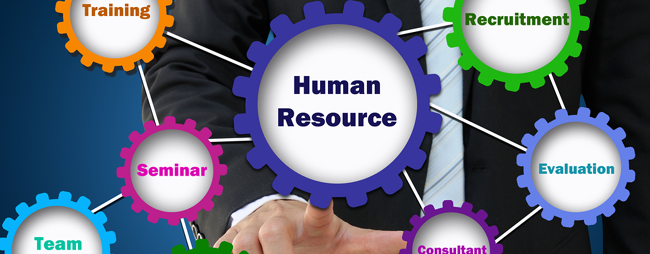
Few HR thoughts on Mergers
A few months back, newspapers and social media platforms were flooded with the news of Facebook taking over the popular communication app provider company Whatsapp in a 19 billion USD takeover. While for many, Whatsapp is just another mode for free communication with their near and dear ones, take a sidestep and think about the thousands of military men posted in treacherous war-stricken countries all over the world who had only this and similar communication tools to let their family know they are alive and fighting strong. Talk about a necessity in life! But what does this imply in terms of organizational changes in these two social giants? While one ceased to function as a separate legal entity, the other had to absorb the pros and cons of the application to let it retain its original popularity and think of ways to improve on it. The three main areas that Facebook probably had to focus on were:
1. Human assets
2. Infrastructural changes
3. Technology adaptation
Innovation and the urge to retain its social dominance may have led Facebook to take this huge and expensive step but what functions does the HR team perform during this time?
Looking behind the scenes
Preparing for the move – The thinking process
Any company thinking of making organizational changes has to plan the move meticulously to ensure they take place seamlessly and they deliver the expected results. Analytical giant KPMG has brought to light the alarming fact that about 83% of the companies that make such changes are not able to deliver the expected returns to their stakeholders. So what are some of the things the management bears in mind before making the change?
Are the employees within the organizations happy with the move?
Who are to be retained and who may have to be laid off?
Are sources going to be stretched to the limits during the change period?
Can an interim management team be put in place to fill any voids created while the changes take place?
Are there sufficient technological and infrastructural bases in place to make a new business model a success?
While the management is engaged in decision makes processes, effective HR team collects feedback from the personnel and imparts management aims clearly to them in return. Allaying any fears of the employees and boosting their positive views can be easily managed with the right communication skills and a sound knowledge of the changes that will take place in the organizations. While the management is in charge of using SWOT analysis and tools like 6 Sigma to make the decisions, the onus of handling the employees’ concerns and expectations lies on the HR team.
A discussion – The deliberation process
The management team takes a hard look at the reasons why they deem a change is required. At every stage of this process, HR is involved because they hold reports of the employees within the organization. Some of the points considered are:
HR conducts a performance review of the professionals presently working and provides the results to the management team. The team, in turn, combines these reports and the company’s performance and decides if growth is stunted or does innovation missing? Are there risks involved in the organizations changes and if, how should they be tackled?
Is the number of employees hired by the organization adequate, over the requirement or below par? HR conducts a level by level investigation of ratio of the professional working and the amount of work done at that level.
What do the management and stakeholders expect post-changes? Trimming the fraying edges will lead to a leaner but fitter team performing their tasks while cutting costs whereas adding to the employee numbers, when required, would mean more resources are available to undertake the pending tasks and delivering their services on time with high quality.
Is the professional hierarchy in place adequate? When, for example, the top level management gets lackadaisical, the direct impact falls on the way the executives in the lower rungs of the hierarchy perform. A perfect example of this would be when Steve Jobs was asked to leave the gigantically successful company, Apple Inc., he helped found but was later asked to re-join it. Both moves, of course, were results of a review of the management team. An HR performance review’s radar, therefore, is not limited to just the working class.
Setting benchmarks based on external factors to compare the organization’s performance is probably the easiest and broadest way of ensuring any organizational change plans are made when required and to the degree required. While an HR team can assess the micro factors (within the organization), the management should also consider macro factors such the performance and techniques of their counterparts and the industry in which the function in, or they wish to enter into.
An efficient HR team in the organization correctly reads the organization’s pulse and reports it to the management team. So the more accurate the data collected is, the better change plans management can make. Making plans based on incomplete and inaccurate data is futile and can have adverse effects on the company.
Method of approach
These are some of the key steps an HR team should follow to assist the management team of the company while organizational changes take place:
Relay the vision of the company and the expected results clearly to all employees. While this may bring good news to some in the form of foreign travels, getting a promotion with additional responsibilities, the HR must also empathetically deal with those employees who face adverse consequences like layoff and getting pay cuts.
Collect all the information required from within the organization such as employee performances, their current salaries, their current duties and their thoughts about the proposed organizational changes.
When the changes are in place, HR teams should be on the lookout for experienced professionals who can bridge any management gaps for the time-being, if required. Experiences CEOs and MDs are invaluable during this period.
Changes are inevitable. So an HR team must convince the personnel to accept the changes in good spirit and impress upon them what they and the company can benefit out of these changes.
When the changes have been made, the HR team in collaboration with the management team keeps the momentum going and helps perform periodic reviews of employees working under the changed circumstances, compare the benchmarks and the achieved results of the organization, facilities new hires if required and keep a constant communication channel open between the higher and lower level executives of the organization.
So while the management may be the think-tank and make the decisions about the changes, it would an impractical move on its part to cut out the HR department from their decisions because managing employee concerns and expectations is one of the keys to a successful organizational change.
 👋 contact us
👋 contact us



